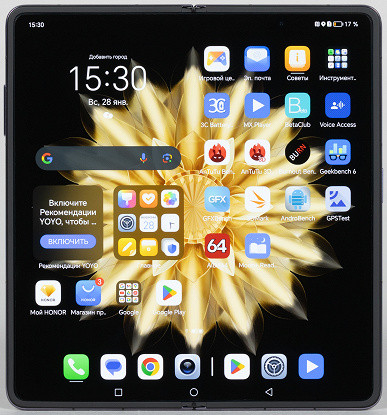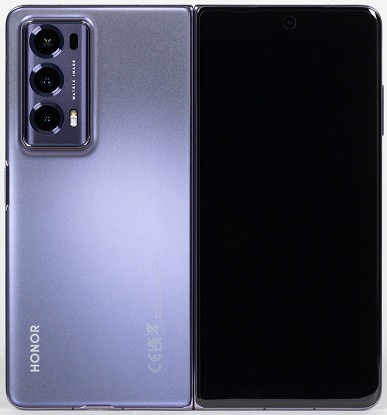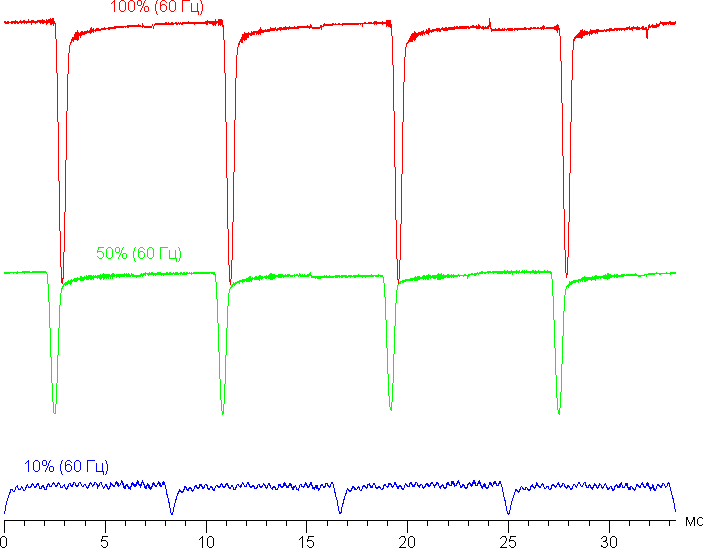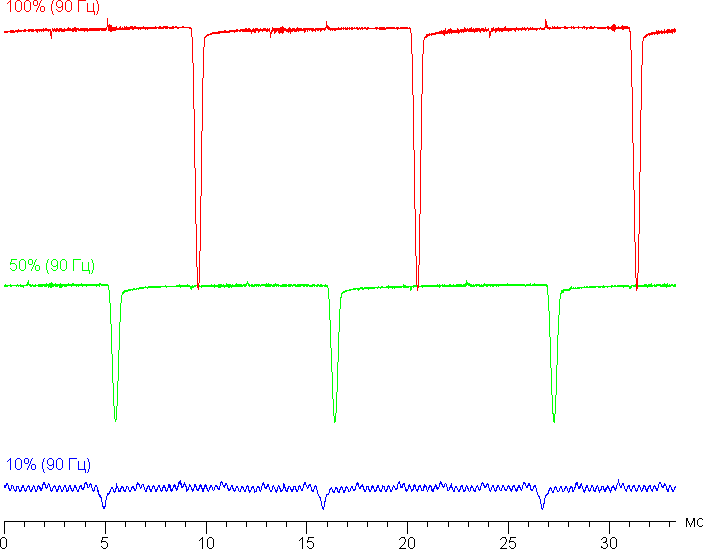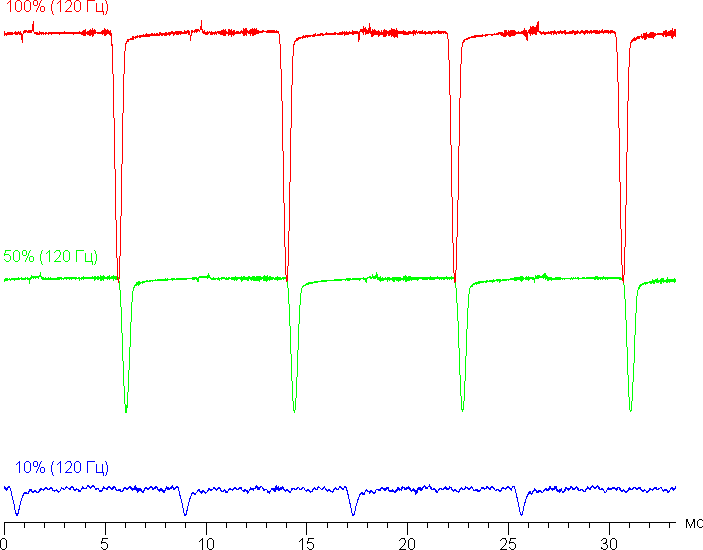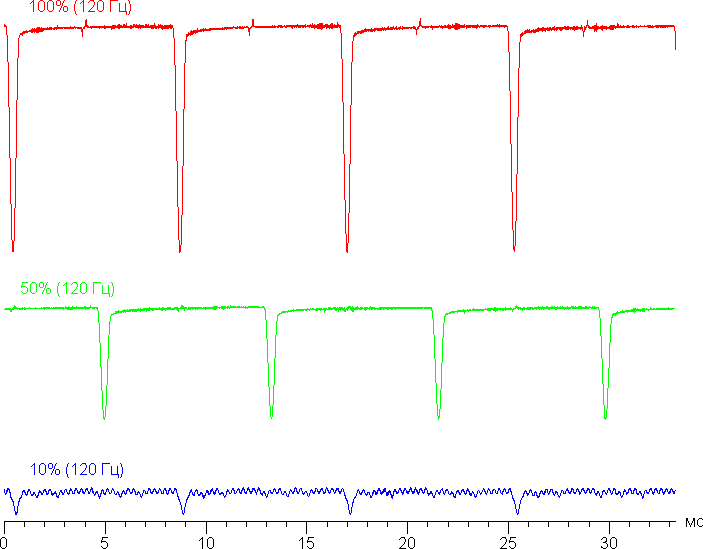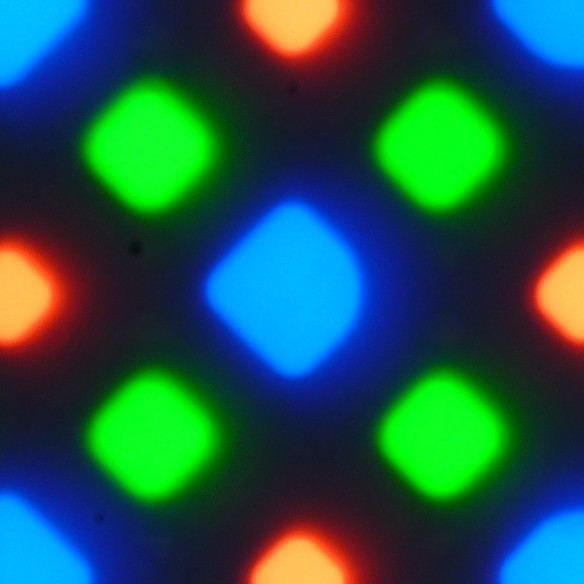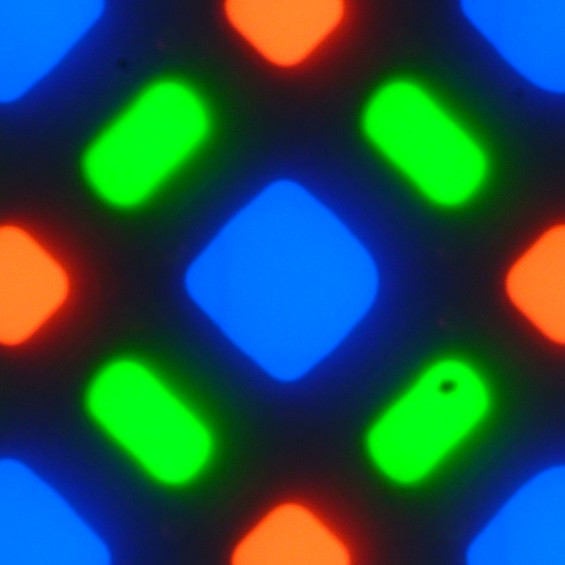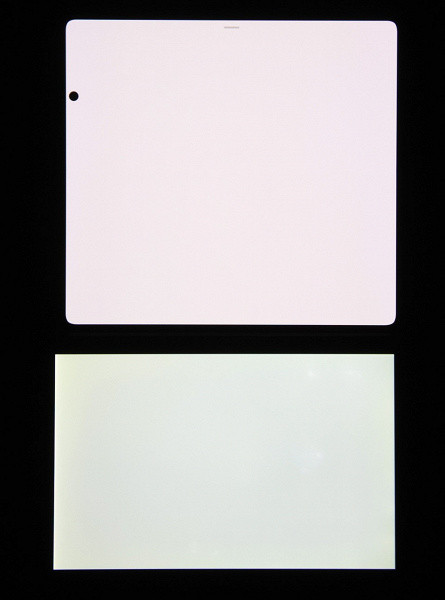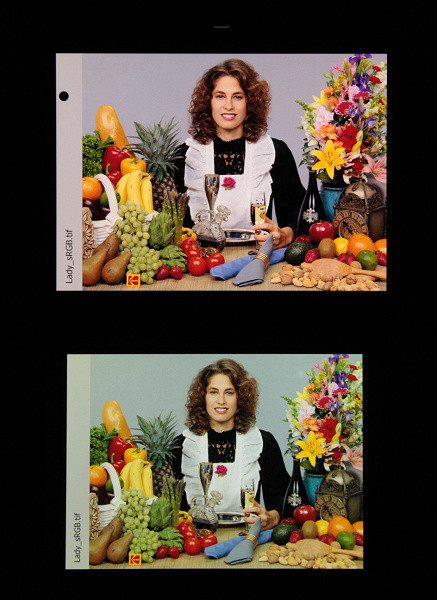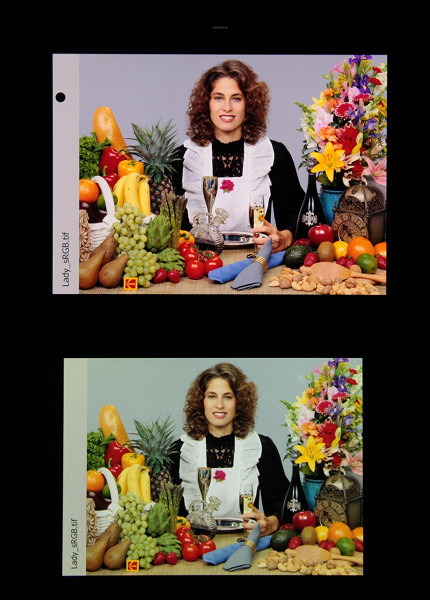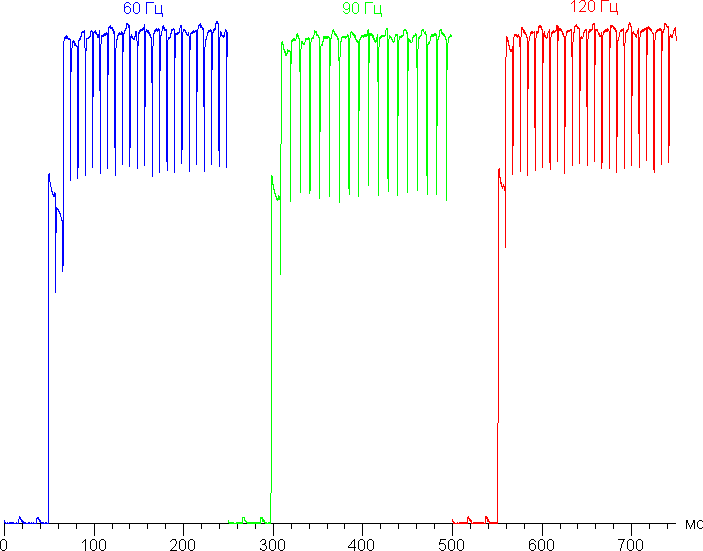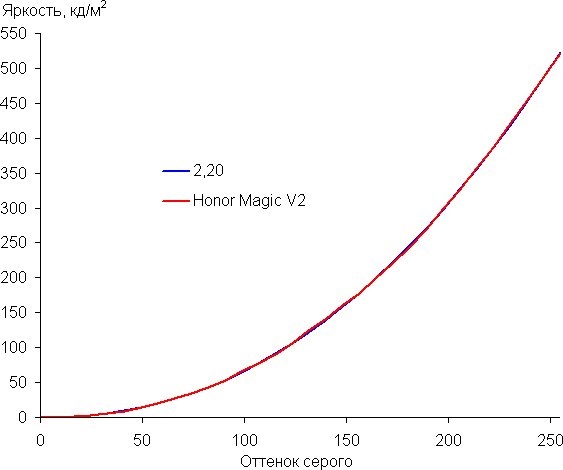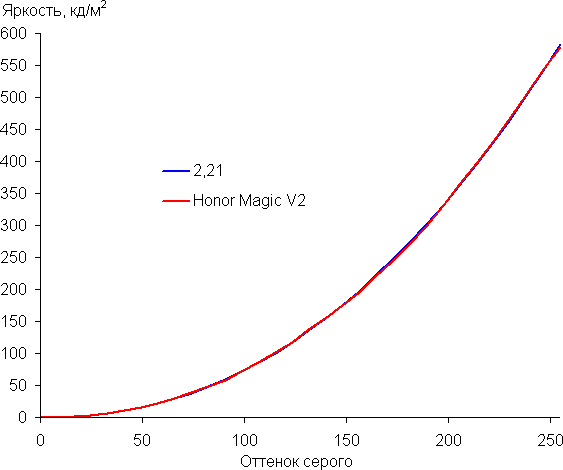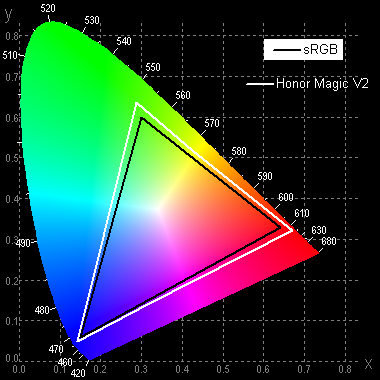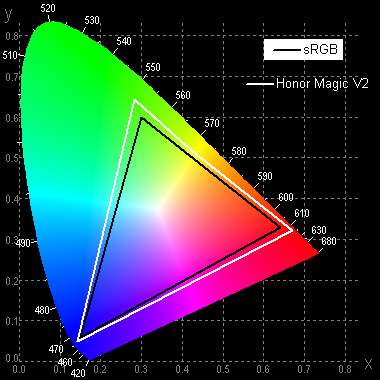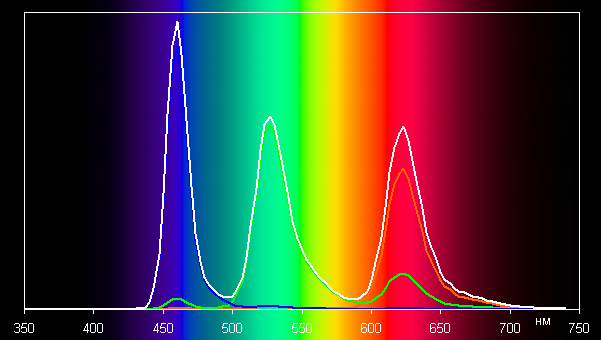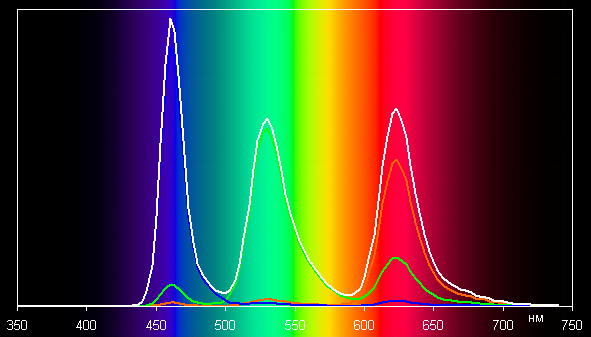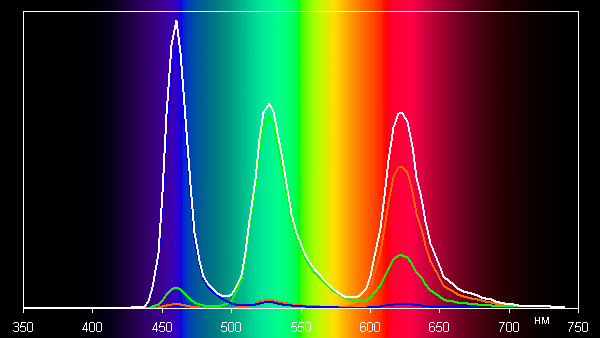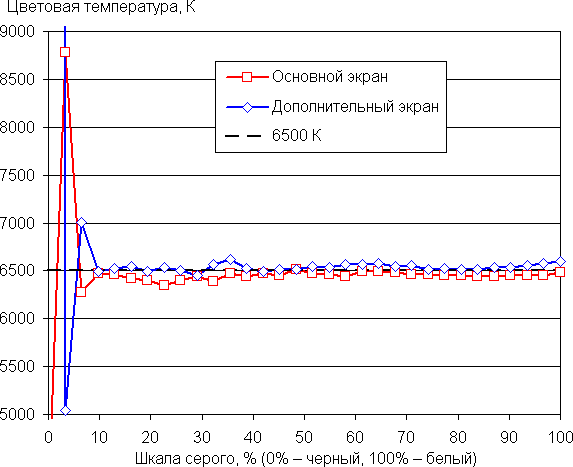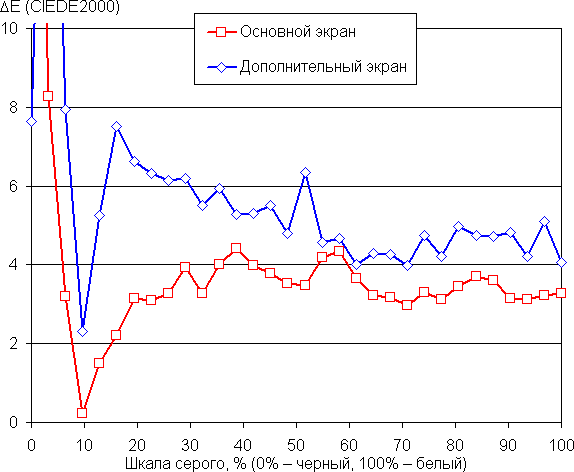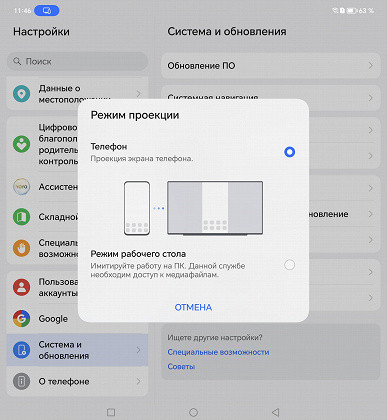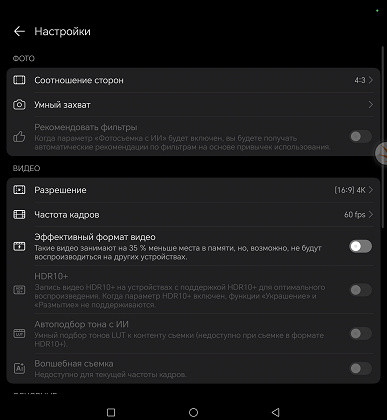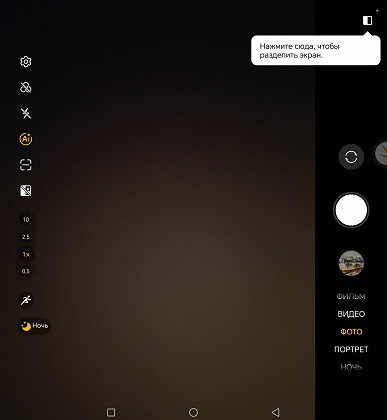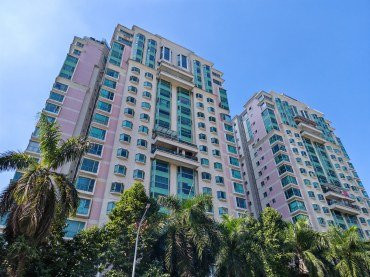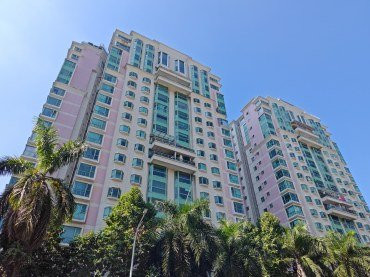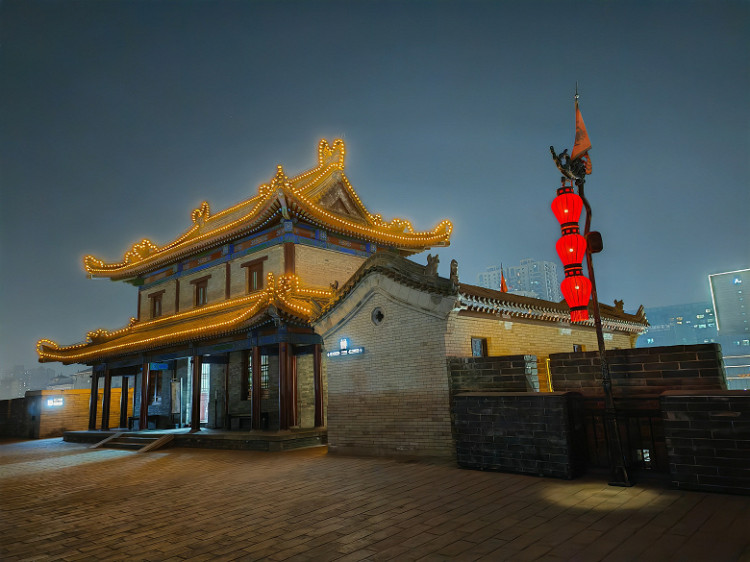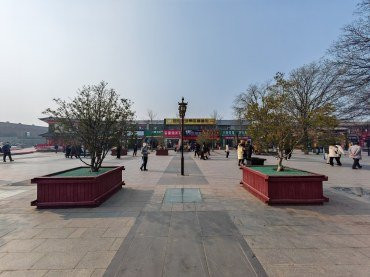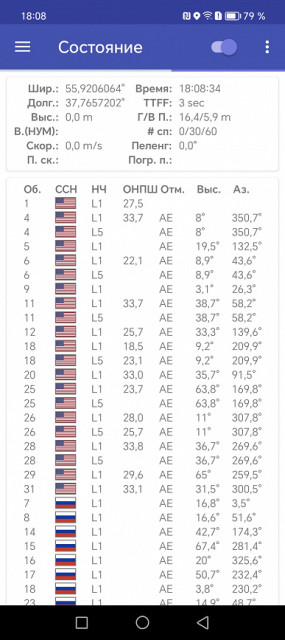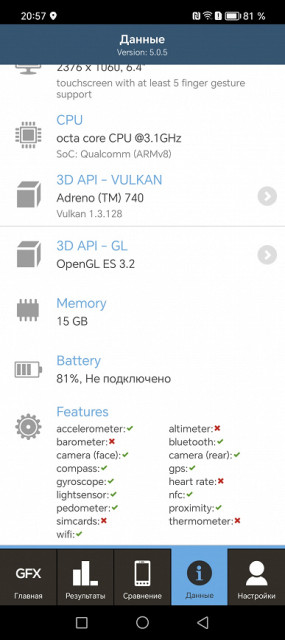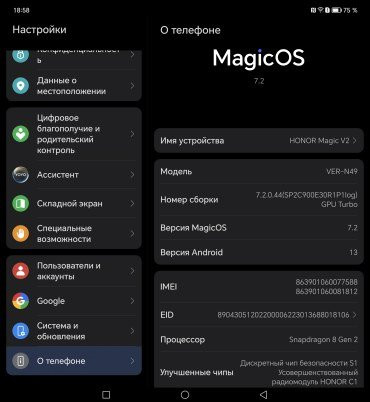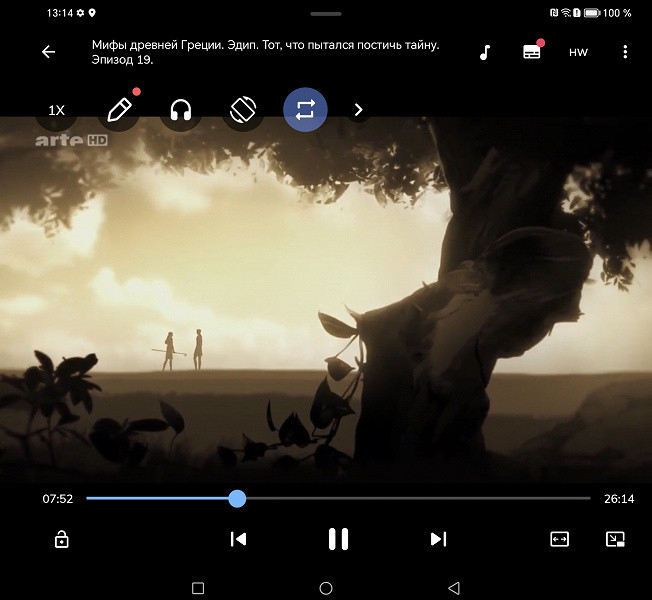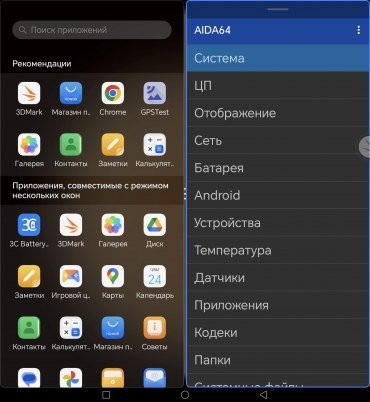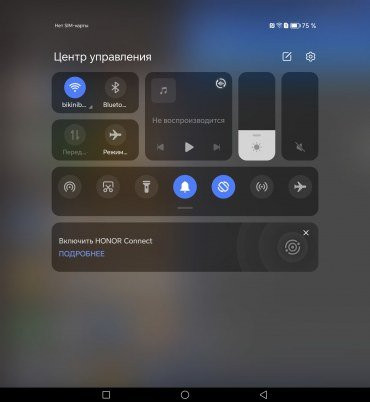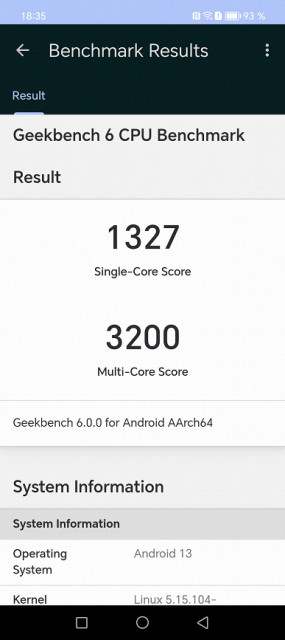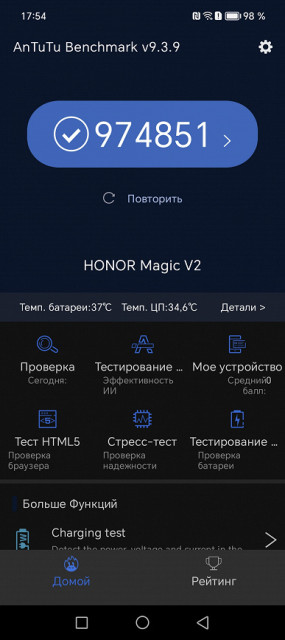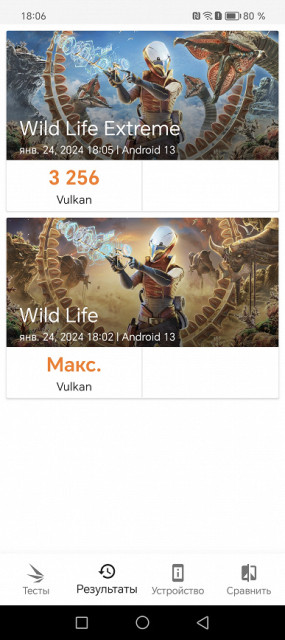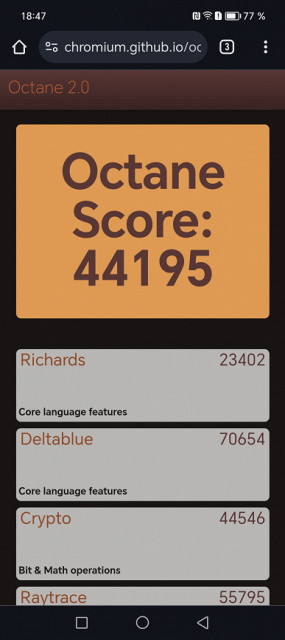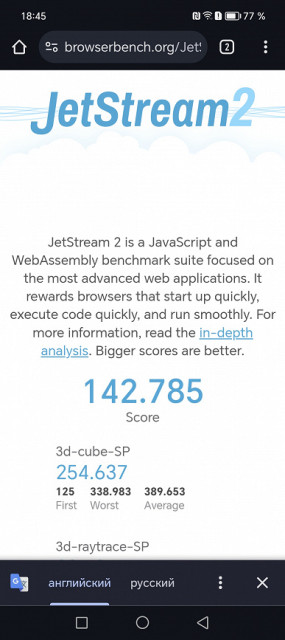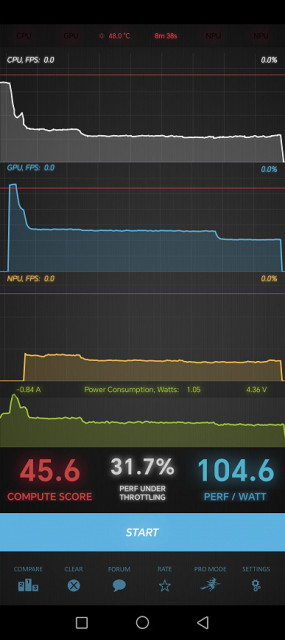Recently they started accepting pre-orders for Honor Magic V2. This foldable smartphone appeared in the Chinese domestic market more than six months ago, but only now it has become available outside the country. Interestingly, it has become the subject of a buying frenzy in China due to outstanding sales. The cost of the smartphone is quite high, but it has several unique features that make it stand out even among the “elite” class of modern clamshells.

Main characteristics of Honor Magic V2 (model VER-N49)
- SoC Qualcomm Snapdragon 8 Gen2, 8 processor cores (1×Cortex-X3 @3.2 GHz + 2×Cortex-A715 @2.8 GHz + 2×Cortex-A710 @2.8 GHz + 3×Cortex-A510 @2 .0 GHz)
- GPU Adreno 740
- Operating system Android 13, MagicOS 7.2
- Main (internal) touch display AMOLED, 7.92″, 2344×2156, 402 ppi, 120 Hz
- External touch display AMOLED, 6.43″, 2376×1060, 402 ppi, 120 Hz
- RAM 16 GB, flash memory 256/512 GB, 1 TB
- No microSD support
- Nano-SIM support (2 pcs.)
- Networks 2G GSM, 3G WCDMA, 4G, 5G
- GPS/A-GPS, Glonass, Galileo, BDS, QZSS
- Wi-Fi 7 (802.11a/b/g/n/ac/ax/be)
- Bluetooth 5.3, A2DP, LE, aptX HD
- NFC
- USB 3.0 Type-C, USB OTG, Display Port 1.2
- There is no 3.5mm audio output for headphones
- Cameras 50 MP + 50 MP (wide-angle) + 20 MP (2.5× optical zoom), 4K@60 fps video with gyro-EIS
Front camera 16 MP - Proximity and lighting sensors, magnetic field, accelerometer, gyroscope
- Fingerprint scanner (side-mounted)
- Battery 5000 mAh, charging 66 W
- Dimensions 157x145x4.7 mm when unfolded and 157x74x9.9 mm when folded
- Weight 231/237 g
Appearance and ease of use
Honor Magic V2 immediately attracts attention with its dimensions. This folding smartphone, despite its sliding design, is practically no different in linear dimensions and thickness when folded from conventional all-in-one smartphones. Moreover, it is lighter than almost all known folding devices of our time.

When unfolded, the smartphone looks neat and orderly: it is an almost square mini-tablet with a thickness of only 4.7 mm.

Honor Magic V2 is made in a “book” form factor, where the doors of its body open “wide”, similar to the pages of a regular book. Although similar form factors are already on the market, the thin and light design of this smartphone makes it really easy to carry in a pants or jacket pocket (when folded, of course!).
The new generation titanium hinge in Honor Magic V2 ensures strong fixation of the halves in intermediate positions. This allows, for example, to use the device as a camera without the need for a tripod. In this case, the camera interface is divided into two screens in this position.
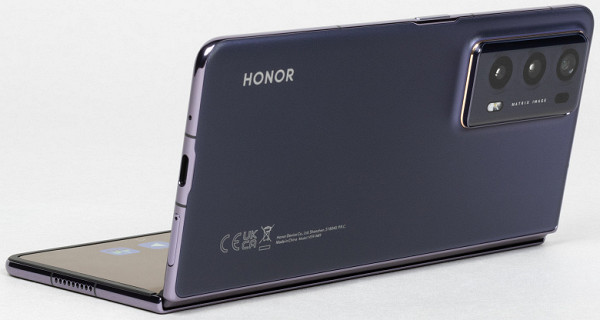
When the door body is fully opened and closed, the closer mechanism is activated. When unfolded, the doors are securely fixed, forming a compact and ultra-thin mini-tablet almost in the shape of a square.

When folded, Honor Magic V2 has no gap between the halves, and there is a edge around the perimeter of the screen that prevents the parts of the screen from completely touching each other when folded.

The shape of the side frame creates a recess at the junction of the halves, which makes it easy to grip with your fingers when opening the device. However, it is worth noting that there is a risk of the device accidentally falling out of your hands in everyday use due to the extremely smooth and slippery chromed metal sides.

On the outside, Honor Magic V2 is equipped with glass panels: matte on the back and especially durable “second-generation nanocrystalline glass” on the front. The edges of the glass are slightly rounded, and a factory film is applied on top. The film can be removed at will, since glass itself is one of the most durable glass available today.
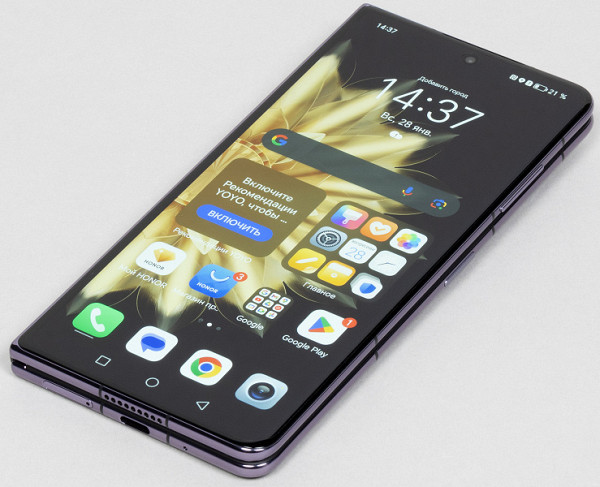
The internal screen is also equipped with a protective film, but it is strictly forbidden to remove it. The flexible plastic covering of the screen creates a small noticeable fold at the junction of the halves, which is felt when touched, but does not cause discomfort while using the device.
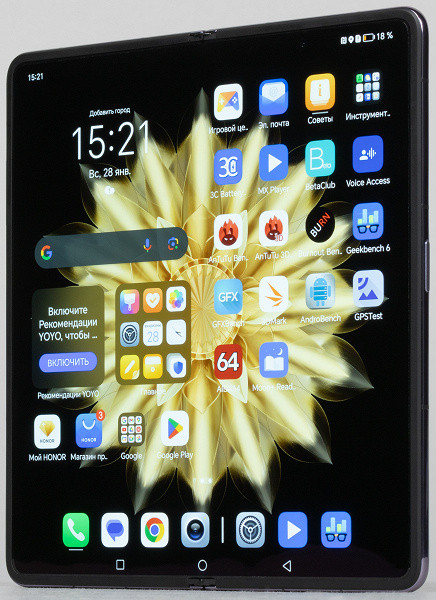
The fingerprint scanner is integrated into the flat power and lock key on the side. It reacts accurately and instantly. The slide-out tray can accommodate two Nano-SIM cards. However, the device does not support the use of a microSD memory card.
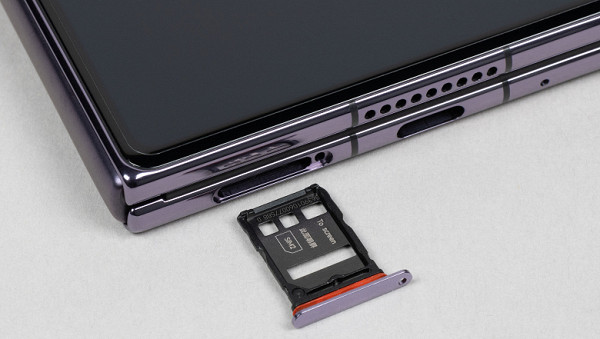
On the top and bottom edges of the device there are two microphones and two speakers, as well as a USB Type-C connector and a memory card slot. However, there is no 3.5mm audio output for wired headphones.

The cameras protruding from the rear do not allow the smartphone to lie stably on a hard surface; it wobbles when working with the screen.

The device is offered with two rear panel options — frosted glass or eco-leather. At the moment, only the option with frosted glass is on sale, available in black and purple. It should be noted that the smartphone body is not fully protected from moisture and dust.
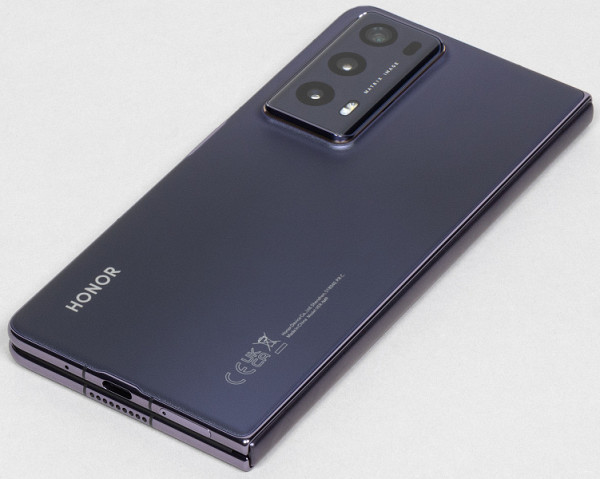
Screen
The Honor Magic V2 smartphone is equipped with a main flexible OLED display with AMOLED technology, the diagonal of which is 7.92 inches and the resolution is 2156x2344. The physical dimensions of the screen are 136x148 mm, providing a pixel density of 402 ppi. The thin frame around the screen is 4 mm on the sides, as well as on the top and bottom. The main display supports a 120Hz refresh rate and HDR10+.
The additional AMOLED display (67 x 149 mm) has a diagonal of 6.43 inches and a resolution of 1060 x 2376 (18:9). This screen also supports 120Hz refresh rate and HDR10+. High-strength nanocrystal glass 2.0 is used for protection.
The front surface of the large main folding screen is made of plastic, while its surface is scratch-resistant, and even the use of a fingernail did not lead to damage. The flexible screen has a glossy and slightly uneven surface over its entire area, with a pronounced crease at the bend. The presence of a protective film on this screen, which cannot be removed, is part of the screen itself and has excellent anti-glare properties.
The additional screen has a glass plate with a mirror-smooth surface and a thin protective plastic film. The oleophobic coating on the outer surface of the additional screen is more effective than on the main one. The screens do not have an air gap between the layers, which contributes to better readability in the sun.
The maximum brightness of the white field under normal conditions was 530/580 cd/m² (main/secondary screens), with the ability to increase to 910/1300 cd/m² in bright light with automatic brightness adjustment. The auto-brightness function in different conditions was also appreciated, providing excellent daytime readability in the sun.
However, at any brightness level there is modulation with a frequency of approximately 90 or 120 Hz.
It is noticeable that the level of flicker at modulation with a frequency of 120 Hz is low, which eliminates visible flicker at all brightness levels. It is important to note that when the brightness level is significantly lowered, additional modulation appears at a higher frequency, approximately 3840 Hz.
A mode with an increased refresh rate of up to 90 or 120 Hz is available in the screen settings. This mode at least makes scrolling through menu lists smoother.

In the 90 Hz mode, the nature of the modulation does not fundamentally change, only the main modulation frequency is reduced to 90 Hz.
In the case of the 120 Hz refresh rate mode, the modulation pattern is the same as in the 60 Hz refresh rate mode:
In each case there is no visible flicker.
Both screens are equipped with a Super AMOLED matrix — an active matrix based on organic light-emitting diodes. A full-color image is formed using subpixels of three colors: red ®, green (G) and blue (B), but the number of red and blue subpixels is half as many, forming an RGBG structure. This is confirmed by a microphotograph of the fragment.
In this fragment you can see 4 green subpixels, 2 red (4 halves) and 2 blue (1 whole and 4 quarters). By repeating these fragments, you can cover the entire screen without breaks or overlaps. This matrix is known as PenTile RGBG, where the screen resolution is measured in green subpixels, while for the other two colors it will be lower. There is some jagged edge contrast and other artifacts, but due to the high resolution these have minimal impact on image quality.
The screens have excellent viewing angles. A slight blue-green tint appears at wide angles, but black remains an irresistibly black color at all angles. When comparing photographs in which the same images are displayed on both screens, it is clear that white color, when deviated at large angles, acquires a slight blue-green tint, but black color remains irresistibly black. This color is so saturated that the contrast parameter becomes irrelevant in this context. For comparison, photos with the screens of a smartphone and a second device (Nexus 7) are shown. The brightness of the screens is initially set to approximately 200 cd/m², and the color balance on the camera is forced to 6500 K.
White field (Bright profile):
Note the good uniformity of brightness and color tone of the white field.
And a test picture (Regular profile):
The color rendering quality is good, the colors are bright and their saturation is acceptable. Compared to the Nexus 7 screen, there is a slight difference in the color balance of both screens. However, it is worth noting that photographs are not always a reliable source of color information and are provided for illustrative purposes only. For example, in photographs there is a pronounced reddish tint in white and gray areas, which, when viewed from a perpendicular perspective, is not as visually pronounced. This is confirmed by hardware tests carried out using a spectrophotometer. One reason for this is that the spectral sensitivity of a camera sensor does not exactly match human vision.
The photo was taken after selecting the «Normal [colors]» profile in the screen settings. There are two profiles available.
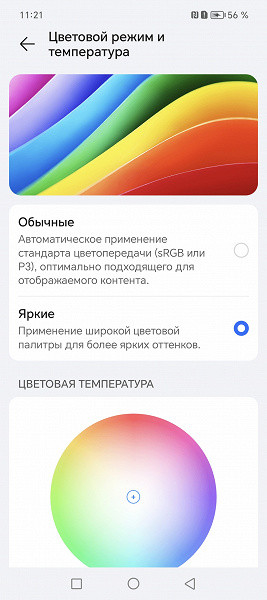
When choosing the Vivid [colors] profile, the colors are oversaturated and unnatural:
All screens experience a decrease in brightness when viewed from an angle, but the decrease is less pronounced on a smartphone. Even at the same formal brightness, a smartphone screen appears visually brighter compared to LCD screens, especially when viewed from a low angle, which is often the case when using mobile devices.
Switching of matrix elements occurs almost instantly, but at the moment of switching on, a small step may be observed, about 17 ms wide (at a screen refresh rate of about 60 Hz), 11 ms (90 Hz) or 8 ms (120 Hz). For example, the graph shows the dependence of brightness on time during the transition from black to white.
Under some conditions, the presence of such a step may cause plumes to follow moving objects.
A gamma curve constructed using 32 points with an equal interval between the numerical values of shades of gray showed the absence of significant brightness levels in light and dark areas. The approximation power function exponents are 2.20 for the main screen and 2.21 for the secondary screen, which is close to the standard value of 2.2 (providing a natural lightness of the image). Both gamma curves deviate little from the power law:
Let us recall that in OLED screens the brightness of image fragments dynamically changes depending on the nature of the displayed content — it decreases for light images in general. As a result, the resulting dependence of brightness on hue (gamma curve) is most likely slightly different from the gamma curve of a static image, since the measurements were carried out with sequential output of shades of gray almost over the entire screen.
The color gamut in the Vivid profile exceeds sRGB:
When you select the Normal profile, the coverage is compressed to the sRGB boundaries:
Without correction (in the «Vivid» profile), the component spectra (that is, the spectra of pure red, green and blue colors) are well separated, but there is some cross-mixing:
In the case of a profile, the usual color components are mixed with each other to a large extent:
This device has the ability to adjust the color balance by selecting a color temperature profile or adjusting the hue on the color wheel.

Even without correction, greyscale balance in the Normal profile remains good, as color temperature is close to the standard 6500K and blackbody deviation (ΔE) remains below 10, which is considered acceptable for a consumer device. At the same time, color temperature and ΔE remain stable from shade to shade, which has a positive effect on the visual assessment of color balance:
Even without correction, greyscale balance in the Normal profile remains good, as color temperature is close to the standard 6500K and blackbody deviation (ΔE) remains below 10, which is considered acceptable for a consumer device. At the same time, color temperature and ΔE remain stable from shade to shade, which has a positive effect on the visual assessment of color balance:
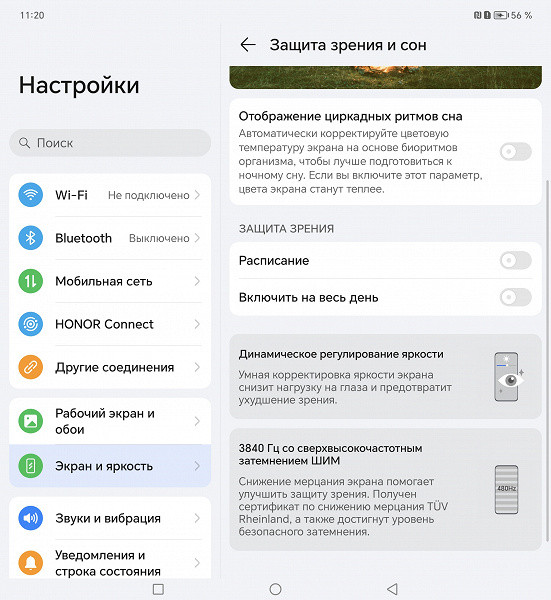
In principle, bright light can disrupt the circadian rhythm (see the article about the iPad Pro with a 9.7-inch display), but everything can be solved by reducing the brightness to a low, but still comfortable level. Distorting the color balance by reducing the contribution of blue makes absolutely no sense.
This machine supports DisplayPort Alt Mode for USB Type-C, which allows you to output image and sound to an external device when connected to a USB port. (USBTreeView program report.) When connected to our monitor, video output is in 1080p mode at 60 Hz frame rate. There are two modes of operation: displaying an alternative desktop (Desktop Mode) or simply copying the smartphone screen (Phone).
In the second case, when the smartphone screen is in portrait orientation, the image on the TV screen is displayed inscribed in height and with wide black margins on the sides. In landscape orientation, the image also fits in width, creating narrow black margins at the top and bottom. There is no exact reproduction of the image without modification.
In alternate desktop mode, a completely different main screen appears on the monitor, and the smartphone screen can be used as a touchpad for coordinate input. It can also be used as a drawing tablet on top of a desktop or work as a regular small second desktop.

Not all applications are guaranteed to work correctly in this mode. The output is already carried out in a resolution of 1920×1080 one to one pixel by pixel. Note that simultaneously with image and sound output, you can connect a mouse and keyboard, USB flash drives, etc. to the smartphone via USB, turning the smartphone into the basis for a workplace. To do this, the adapter or monitor (with a USB Type-C input) must allow the connection of external USB devices (that is, have a USB hub). Connection to a wired network at a speed of 1 Gbps is also supported. To charge your smartphone, you will need to connect a charger to the adapter/dock, and monitors with a USB Type-C input usually supply power to the smartphone themselves.
In desktop mode on an external monitor, you can work on the smartphone itself in parallel, getting two desktops at the same time. However, video output in hardware decoding mode is only available on one screen, and one program cannot run on both screens at the same time.
To summarize, both screens have a high maximum brightness (910/1300 cd/m²) and excellent anti-glare properties, which allows you to use the device even in bright sunlight. Brightness can be comfortably adjusted in different conditions, and automatic brightness adjustment works adequately. OLED screens provide true blacks and minimal drop-off in brightness when viewed from an angle. Image quality is high, and the additional external screen, despite the curved edge, does not have a significant impact on image quality.
Camera
The Honor Magic V2 smartphone is equipped with a triple rear camera system:
- Main camera with 50 MP resolution, f/1.9 aperture, phase detection autofocus (PDAF), 8x8 dToF Laser AF and optical image stabilization (OIS).
- Wide-angle camera with a resolution of 50 MP, f/2.0 aperture and autofocus (AF).
- Long-focus camera with a resolution of 20 MP, f/2.4 aperture, 2.5× optical zoom, phase detection autofocus (PDAF) and optical image stabilization (OIS).
The main camera produces 12.5MP photos as standard using a pixel binning feature. It's also possible to shoot at full 50MP resolution, but this doesn't offer any practical benefits. Images at this high resolution may appear less clear and may show imperfections, so we recommend using the default mode.
In sufficient lighting, 12.5-megapixel images are bright, rich in color, and have excellent sharpness across the entire frame. High detail and wide dynamic range allow you to convey even dark and light areas of the scene. However, color rendering often appears oversaturated, with excessive brightness added by the renderer. Contour sharpening is raised to a moderate level, which gives images sharpness, but there is a slight drop in sharpness towards the edges of the frame. In general, the quality of shooting with the main camera leaves a positive impression.
Examples of shooting in automatic mode are also given:
In portrait mode, the smartphone automatically switches to a telephoto lens with a focal length of 62 mm. The advanced phase detection autofocus system delivers speed and precision, allowing you to capture stunning portraits even in fast-moving environments. Photos are free of focal subject blur for excellent clarity, while backgrounds are effectively blurred for a beautiful effect.
The telephoto lens also copes well with optical zoom: images are sharp, clear, detailed and voluminous. It's important to note that photos using optical zoom are taken at a quarter of the resolution of the main sensor, which involves the use of pixel binning technology. However, if the limited image size of 5 megapixels does not cause any comments, the result can be assessed as excellent.
When you zoom even closer, digital zoom comes into play, which naturally leads to the expected reduction in quality in terms of detail.
At night, the smartphone adjusts color rendering even more intensively, creating a spectacular and “warm” picture. However, the exposure seems overexposed, making the photos feel less like atmospheric night shots and more like they were taken in foggy conditions. Detail in such conditions becomes significantly weakened, and, in fairness, such photographs are better used as miniatures, where they retain an impressive effect.
It makes sense to switch to a wide-angle lens only in exceptional cases when you need to fit more into one frame. This module is not so detailed, and even during the day it adequately conveys only the center of the frame, strong blurring is noticeable at the edges. Especially at night or in low light conditions, its capabilities are significantly reduced. However, the color rendition in pictures from this camera coincides with the main one.
The front cameras are both 16 megapixels and are located on the external and internal screens. The quality of the images is average, they have some whitishness, textures look blurry, and detail is not at a high level. Given that folding smartphones provide the convenience of using the main camera to take pictures of yourself using the external screen as a viewfinder, this may be the preferred method. Selfie cameras can be useful for video calls.
The smartphone can record video in resolutions up to 4K at 60 frames per second. You can switch between lenses and modes as you shoot, delivering clear, detailed images with smoothness. Video recordings are bright, without overexposure, with excellent stabilization and no “jelly” effect. The video quality is rated as very high.
Telephone and communications
Honor Magic V2 provides a wide range of network capabilities, including support for 5G, Wi-Fi 7, Bluetooth 5.3 LE, NFC and USB 3.0. In urban environments, within the Moscow region, the device demonstrates stable operation in wireless networks, provides a reliable connection and quickly restores communication after interruptions.
The smartphone is equipped with a dual-band satellite navigation module that supports GPS (L1+L5), Glonass (G1), BDS (B1I+B1c+B2a), Galileo (E1+E5a) and QZSS (L1+L5). The start of signal reception from satellites occurs quickly, and the positioning accuracy leaves a positive impression.
The speaker's sound quality is bright and clear during calls, and the vibration motor provides highly noticeable feedback. The built-in sensors include all the necessary ones, including a gyroscope.
Software and multimedia
Honor Magic V2 uses the Android 13 operating system, and the user interface is represented by the MagicOS 7.2 shell. The interface retains the familiar elements of Android, but with some quirks, especially when used in tablet mode. Working on a larger screen becomes more convenient, especially when using floating windows that can be scaled, split, and even used in picture-in-picture mode. Half-fold mode changes the camera app's interface, allowing you to place the viewfinder on one half of the screen and the gallery on the other.
The device supports access to Google services, but also offers its own stores and repositories, providing additional options for finding useful programs and interesting games.
The smartphone's speakers operate in stereo mode and sound rich and loud. The sound in the headphones is also high-quality, there is support for the DTS:X Ultra sound effects system.
Performance
The Honor Magic V2 smartphone is equipped with an eight-core Qualcomm Snapdragon 8 Gen2 processor, and the graphics processor is Adreno 740 GPU. The device has 12 GB of RAM, and the built-in storage capacity can be 256 GB, 512 GB or 1 TB. There is also support for connecting external devices via the USB Type-C port in USB OTG mode.
Qualcomm SM8475 Snapdragon 8 Gen2 is a powerful top-level platform, being one of the most powerful mobile SoCs. In the AnTuTu test, the smartphone reaches approximately a million points, and the results in gaming benchmarks are so high that these powers exceed the needs of most mobile games.
Testing in comprehensive tests AnTuTu and GeekBench:
All results obtained during testing of the smartphone were systematized and presented in tables for ease of analysis. We usually also add to the table the results of other devices from various segments that have been tested on the latest versions of popular benchmarks. This is done for a more clear comparison of the obtained numerical data. Unfortunately, results from different versions of benchmarks cannot be presented in one comparison, and many noteworthy and relevant models remain outside the scope of this analysis, since they were tested on earlier versions of test programs.
| Honor Magic V2 (Qualcomm Snapdragon 8 Gen2) | Huawei Mate X3 (Qualcomm Snapdragon 8+ Gen1) | Oppo Find N2 (Qualcomm Snapdragon 8+ Gen1) | Oppo Find N2 Flip (Mediatek Dimensity 9000+) | Samsung Galaxy S23 Ultra (Qualcomm Snapdragon 8 Gen2) | |
|---|---|---|---|---|---|
| AnTuTu (v9.x) (bigger is better) | 974851 | 1052648 | 1061115 | 815296 | 1180538 |
| GeekBench 6 (bigger is better) | 1327/3200 | 1753/4296 | 930/3691 | 1785/4549 | 1880/4912 |
Testing the graphics subsystem in 3DMark and GFXBenchmark gaming tests:
| Honor Magic V2 (Qualcomm Snapdragon 8 Gen2) | Huawei Mate X3 (Qualcomm Snapdragon 8+ Gen1) | Oppo Find N2 (Qualcomm Snapdragon 8+ Gen1) | Oppo Find N2 Flip (Mediatek Dimensity 9000+) | Samsung Galaxy S23 Ultra (Qualcomm Snapdragon 8 Gen2) | |
|---|---|---|---|---|---|
| 3DMark Wild Life Extreme Vulkan (bigger is better) | 3256 | 2803 | 2774 | — | 3741 |
| 3DMark Wild Life Vulkan (bigger is better) | max | max | max | max | max |
| GFXBenchmark Manhattan ES 3.1 (1080p Offscreen, fps) | 215 | 182 | 180 | 138 | 215 |
| GFXBenchmark T-Rex (1080p Offscreen, fps) | 430 | 446 | 455 | 246 | 481 |
Testing in browser cross-platform tests:
| Honor Magic V2 (Qualcomm Snapdragon 8 Gen2) | Huawei Mate X3 (Qualcomm Snapdragon 8+ Gen1) | Oppo Find N2 (Qualcomm Snapdragon 8+ Gen1) | Oppo Find N2 Flip (Mediatek Dimensity 9000+) | Samsung Galaxy S23 Ultra (Qualcomm Snapdragon 8 Gen2) | |
|---|---|---|---|---|---|
| Google Octane 2 (bigger is better) | 44195 | 31527 | 17743 | 54735 | 59248 |
| JetStream (bigger is better) | 143 | 98 | 80 | 161 | 170 |
AndroBench memory speed test results:
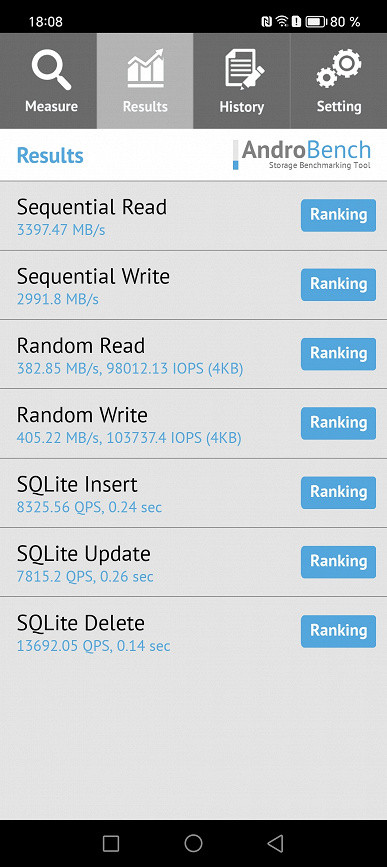
Heat
We test for performance degradation when heated using the Burnout Benchmark program, which allows you to load the CPU, GPU and NPU:
| Stress on | Heating performance as a percentage of maximum |
|---|---|
| CPU | 31% |
| GPU | 37% |
| NPU | 23% |
There is clearly a tendency to overheat.
Battery life
Honor Magic V2 is a unique device that has the feature of two batteries with a thickness of only 2.8 mm each. This is made possible by the use of new silicon-carbon batteries, where the anode is created from a silicon-carbon composite material instead of traditional graphite. The total capacity of both batteries is the standard 5000 mAh.
When unfolded, when watching HD video on the large internal screen, the smartphone can last up to 17 hours, and when watching video on a small external screen — a little more than 20 hours.
Testing was carried out at the standard power consumption level, without using the power saving features, despite their presence in the device. Test conditions included setting the minimum brightness level to a comfortable level (approximately 100 cd/m²). The testing process included continuous reading in the Moon+ Reader app using the standard light theme, continuous viewing of HD video (720p) over a home Wi-Fi network, and playing Injustice 2 with automatic graphics settings.
| Battery capacity | Reading mode | Video mode | 3D Game Mode | |
|---|---|---|---|---|
| Honor Magic V2 | 5000 mAh | 21:00 | 17:00 | 6:00 am |
| Oppo Find N3 | 4805 mAh | 23:00 | 18:00 | 6:00 am |
| Huawei Mate X3 | 4800 mAh | 14:00 | 10:00 am | 5:00 a.m. |
| Oppo Find N2 | 4520 mAh | 20:00 | 17:00 | 5:00 a.m. |
| Oppo Find N2 Flip | 5000 mAh | 20:30 | 19:00 | 8:00 am |
All figures given represent the maximum possible values obtained under “ideal” conditions, including no SIM cards installed. Any changes to the use case will likely cause these results to deteriorate.
Using the included 66W AC adapter, charging the smartphone takes just under 50 minutes. Wireless charging is not supported in this model.
Bottom line
Honor Magic V2 is already available for purchase in Russian retail chains. At the first stage, only one configuration with 16/512 GB of memory is offered at a price of 180 thousand rubles. There are also promotions: until February 19, you can buy a new product for 20 thousand rubles cheaper and receive a tablet as a gift.
Honor Magic V2 turned out to be a very successful and convenient convertible phone. Among other “folding phones”, this is the one you don’t want to let go of. This is perhaps the most convenient convertible phone available at the moment. For example, there's the smaller Oppo Find N2, but it's thicker and harder to use due to its small external screen. In Honor Magic V2, the external screen is large enough and has full characteristics for ease of use when closed.
Technically, there are no major criticisms: although this is not a photography flagship, the smartphone is equipped with three cameras, making photos and videos with the main camera of very high quality. Performance is at a high level, and the set of network modules is almost maximum. The screens are high quality, and the level of autonomy is slightly inferior to all-in-one smartphones. The price, of course, is above average, even for flagship devices, but here the user gets “two in one”: a high-quality smartphone and a thin, lightweight tablet.

